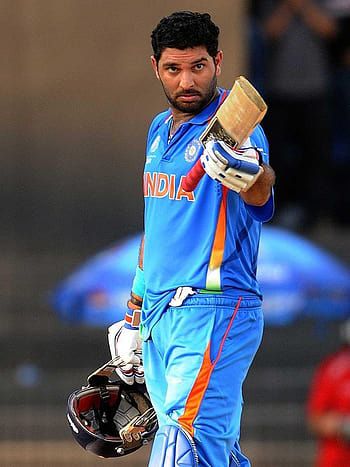Virender Sehwag: The Fearless Master Blaster of Indian Cricket
Introduction:
Virender Sehwag, known for his explosive batting and fearless approach, is hailed as one of the most destructive opening batsmen in the history of Indian cricket. With his unique combination of aggression, impeccable timing, and a wide array of strokes, Sehwag redefined the art of opening batting. In this blog, we delve into the life and career of Virender Sehwag, a true master blaster whose fearless style of play entertained cricket fans around the world.
Early Life and Rise to Prominence:
Virender Sehwag was born on October 20, 1978, in Najafgarh, Delhi. From a young age, Sehwag exhibited immense talent and a natural flair for stroke play. He rose through the ranks of domestic cricket and caught the attention of selectors with his aggressive batting style and ability to dominate bowling attacks.
International Debut and Impactful Performances:
Sehwag made his international debut for India in 1999 in a Test match against South Africa. He announced himself with a scintillating century in his debut series against England in 2001, establishing his reputation as a fearless and attacking batsman.

Memorable Performances:
- Triple Centuries: Sehwag is the only Indian batsman to score two triple centuries in Test cricket. His first triple century came against Pakistan in Multan in 2004, where he scored a blistering 309 off just 375 balls. Sehwag’s second triple century was against South Africa in Chennai in 2008, where he scored an unbeaten 319.
- Fastest Triple Century: Sehwag holds the record for the fastest triple century in Test cricket. He reached the milestone in just 278 balls against South Africa in Chennai in 2008, showcasing his aggressive intent and unmatched batting prowess.
Contribution as an Opening Batsman:
- Aggressive Batting Style: Sehwag’s batting style was characterized by his aggressive and attacking approach. He had the ability to dominate bowlers from the very start of an innings, putting pressure on the opposition and setting the tone for the rest of the team. Sehwag’s fearless stroke play and ability to score at a rapid pace made him a nightmare for bowlers.
- Unmatched Timing and Stroke Range: Sehwag possessed exceptional hand-eye coordination and impeccable timing, allowing him to dispatch even good deliveries to the boundary with ease. He had a wide range of strokes, including the trademark cut, pull, and his audacious lofted shots over the infield.
- Impact in Limited-Overs Cricket: Sehwag’s attacking approach was not limited to Test cricket. He was equally destructive in One-Day Internationals (ODIs) and Twenty20 Internationals. Sehwag played crucial innings at the top of the order, providing India with explosive starts and laying the foundation for big scores.
Records and Achievements:
- Sehwag is the only player to have scored two triple centuries and a double century in Test cricket as an opener.
- He scored the fastest triple century in Test history, reaching the milestone in just 278 balls.
- Sehwag holds the record for the highest individual score by an Indian in Test cricket (319).
- He was a member of the Indian team that won the ICC World T20 in 2007 and the ICC Cricket World Cup in 2011.
Conclusion:
Virender Sehwag’s cricketing journey was characterized by his fearless and aggressive batting style, making him one of the most entertaining cricketers to watch. His ability to dominate bowling attacks and score at a breathtaking pace left a lasting impact on the game. Sehwag’s records and achievements stand as a testament to his exceptional talent and unwavering self-belief. His legacy as a master blaster and a true icon of Indian cricket will continue to inspire future generations of batsmen to play with fearlessness and express themselves on the field.
Read This Also: Sachin Tendulkar, Rahul Dravid, Sourav Ganguly,

